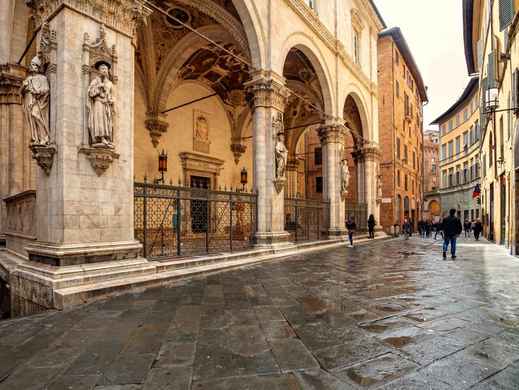


Metropolitan City of Rome
Europe
/
Italy
/
Metropolitan City of Rome
Located in the heart of Italy, Rome, the Eternal City, is sprawled across seven historical hills along the Tiber River. The city's Mediterranean climate features hot, dry summers and mild winters, positioning Rome as a year-round destination. However, the spring period (April-May) and the fall (September-October) offer the most pleasant weather for discovering the city's numerous outdoor treasures.
Rome teems with modern vibrancy that beautifully juxtaposes its ancient ruins, crowded cafes, and contemporary life. The city's inhabitants practice the culture of "dolce vita", taking delight in their long lunches, social strolls in the evening, referred to as 'passeggiata', and lively exchanges at local piazzas. This relaxed approach to daily life provides a serene atmosphere that encourages tourists to take time and relish each moment.
Standing apart from other cities, Rome boasts an unparalleled historical treasure of more than two millennia. The city operates as an open-air museum where you'll traverse from a 2000-year-old amphitheater to a Renaissance palace to a lavish Baroque fountain in mere minutes. The local culinary scene is as fascinating as its history, featuring traditional dishes such as carbonara, cacio e pepe, and Roman-style pizza that reflects the city's rich culinary heritage.
Your trip to Rome would be incomplete without exploring the grand Colosseum and Roman Forum where the ancient history comes alive among the ruins. The Vatican Museums and Sistine Chapel house some of the most impressive artistic achievements in human history while the Pantheon stands as the well-preserved monument from ancient Rome. To experience authentic local life, stroll around the picturesque Trastevere neighborhood, known for its narrow cobblestone streets, hidden squares, and family-run trattorias.

Get to Know Metropolitan City of Rome
Take a tour of this destination's highlights
Popular Areas in Metropolitan City of Rome

Travel Tips for Metropolitan City of Rome
What you need to know before traveling here
Getting Around Metropolitan City of Rome
A guide to Metropolitan City of Rome's local transportation
Rome's subway network includes three lines (A, B, and C), linking major tourist attractions. Tickets are available for purchase at station machines or Tabacchi shops. A single ride (BIT) costs €1.50 and remains valid for 100 minutes. For real-time updates, consider downloading the Roma Public Transport app.
Practical Tips for Metropolitan City of Rome
Things to prepare and best way to visit
The spring (April-May) and fall (September-October) periods offer ideal temperatures and less crowded tourist spots. The summer season attracts a vast crowd of tourists due to its hot temperatures, while winter brings lesser tourists due to occasional rain.
Despite most establishments accepting cards, €50-100 is recommended for petty purchases, taxi rides, and meals in traditional restaurants that may not accept cards. It's handy to have smaller bills when visiting cafes and tipping.
Absolutely. Rome's tap water is not only safe to drink but also tastes great. Bottles can be refilled at the numerous historic fountains throughout the city marked as "acqua potabile."
To maintain respect, shoulders and knees must be covered when entering churches, which includes St. Peter's Basilica. Always carry a light scarf or shawl for cover-ups.
To stay clear of touristy dining spots, avoid restaurants featuring tourist menus or displaying photos of food outside. Opt for restaurants filled with locals, particularly in neighborhoods such as Testaccio or Monti. Lunch usually commences from 1-3 PM, and dinner begins after 8 PM.
See All Practical Tips for Metropolitan City of Rome

Get to Know Metropolitan City of Rome

Travel Tips for Metropolitan City of Rome
More Destination Near Metropolitan City of Rome












 Facebook
Facebook Instagram
Instagram TikTok
TikTok Youtube
Youtube Telegram
Telegram
